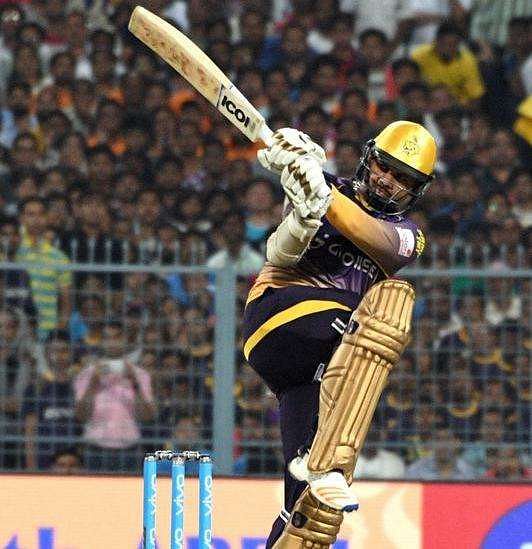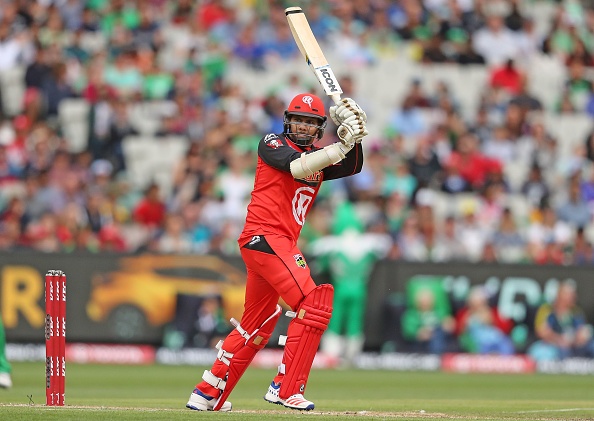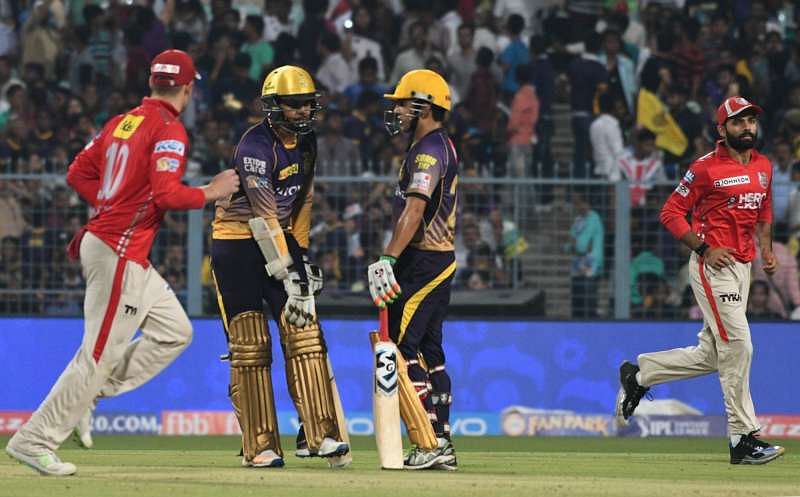
Pinch-hitting is back with a bang: could Sunil Narine’s promotion set a trend?

When Sunil Narine strode out with Gautam Gambhir to open Kolkata Knight Riders’ chase against Kings XI Punjab, there was genuine surprise. Around half an hour later, there was marvel, as a bowler batted his side into command.
While the art of the pinch-hitter is nothing new, it’s usually reserved for players with a certain level of batting ability. In the 1996 World Cup, Sanath Jayasuriya, one of Sri Lanka’s finest batsmen, was considered a pinch-hitting pioneer. It wasn’t meant for the Narines of this world, but the move proved to be an unconventional masterstroke.
Extra Cover: IPL 2017, KKR vs KXIP: SK Turning Point - Sunil Narine impresses with the bat
Not that he was a total stranger to the role – Lahore Qalandars and Melbourne Renegades have dabbled with it – but it’s the first time Narine’s antics have paid off in a really match-changing way.
Bar the occasional knack for finding maximums, Narine is a batting non-entity. In more than eight years of professional cricket, the Trinidadian has never notched up a fifty. But, after being promoted due to Chris Lynn’s absence, Narine smashed and crashed for almost six overs, propelling the Knight Riders into total control.
How Narine took charge
The makeshift opener swiped his second legitimate ball to the fence, but was otherwise rusty early on – forget boundaries, simply making contact was a tricky enough ordeal. Sandeep Sharma came back to bowl a second over; a mistake, as Narine immediately launched into a length delivery, clattering it for six.
But it wasn’t until the fifth over that the 28-year-old showed his new worth. Glenn Maxwell was the victim, as Narine went offside then legside for a couple more fours. Then, in Maxwell-like fashion, he went six, six, four, out against Varun Aaron. Had Michael Holding – another West Indian who had odd, maximum-striking prowess – been born 40 years later, one could have imagined him doing something similar.
By the time he departed, 76 runs had been chopped off the 171 target – which brought a required run-rate of 8.55 to under a run-a-ball. It was job done. Gambhir, Robin Uthappa and Manish Pandey then cruised through the middle overs, as Kolkata handed Punjab their first loss of the season with 21 balls to spare.
It was bizarre but brilliant. Even Punjab’s Ishant Sharma admitted it had caught them totally unaware.

“We were quite surprised. We didn’t know how he was going to bat. We were thinking about Robin Uthappa,” he said.
Maxwell was less shocked, having seen the trick before, yet he was unable to counter it.
Kolkata, meanwhile, revelled in Narine’s opportunistic success. “He's a quality bowler, but I think I need to start trusting him more with the bat now!" mused captain and opening partner Gambhir in his post-match interview.
On a more serious note, the skipper added, “Narine can hit the ball big, we have a long batting line-up, and so we sent Sunil in at the top. He won't face many balls at No. 9 anyway.”
Extra Cover: IPL 2017: Kolkata Knight Riders vs Kings XI Punjab - 5 talking points
The only downside of making Narine a permanent opener is that the opposition could formulate plans for the – despite his exploits – ultimately inferior batsman. It’s a two-way street.
Suppose, for one moment, that the promotion had failed – Kolkata would have lost next to nothing. No team goes into a chase relying on their bowlers to haul them over the line. By giving Narine the licence to thrill, the Knight Riders expanded their batting armoury free of charge.
In fact, the only way such a move could have failed would have been if Narine had become bogged down, keeping his wicket intact but chewing up vital Powerplay deliveries.

The unusual becoming commonplace happens more in T20 than anywhere else. Spinners opening the bowling, batsmen transforming 360-degree hitting from a performance art into a strategic art, fielders showcasing boundary gymnastics to save runs and poach catches that would once have been deemed uncatchable – there’s now nothing that will not or cannot be done to eke out that extra advantage.
Utilising a bowler’s power to its fullest extent is just a natural progression, as teams seek to extract every ounce from their XI. With that in mind, surely prominent six-hitters are best off coming in a bit later, as it matters not to them whether a fielder is at mid-off or long-off.
But for more mortal batsmen, the Powerplay overs represent a chance to punch above their weight. Yes, the past logic has been to have the best batsmen in early, but if a bowler can strike at two a ball – even if only for a short period – then what’s the harm?
It also poses the following question: which other sides could do what Kolkata did, if they need to?
Who else could benefit?
First off, not every side requires a pinch hitter. Indeed, the Knight Riders wouldn’t have had injury misfortune not struck the blazing Lynn. Without their Aussie rocket, KKR were in need of up-the-order impetus to complement the more passive Gambhir. Narine allowed them to do so without fundamentally changing their line-up.
Tim Southee has always had a reputation for punchy, short-lived batting. The Mumbai Indians bowler is wasted lower down the order and would be a prime candidate to play the Narine role – in place of Parthiv Patel perhaps – whenever he gets selected.
Sanju Samson expertly masked Delhi’s batting concerns recently, but Aditya Tare looks a weak link right now. Meanwhile, the raw power duo of Corey Anderson and Chris Morris are nestled in the middle order. Much more accomplished batsmen than the likes of Narine and Southee, sure, but they’d be fit for the same task, and it seems wasteful that neither has the opportunity to play an extended innings.
As with all aspects of the game, pinch-hitting is evolving – in Narine, we’re seeing a pinch hitter who would never have been thought fit for it years ago. Other teams will have carefully noted Kolkata’s craftiness. It’s now up to them to either copy, or come up with their own fresh tactics to bamboozle the rest.